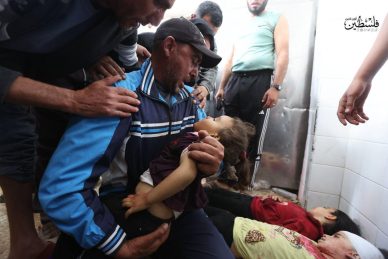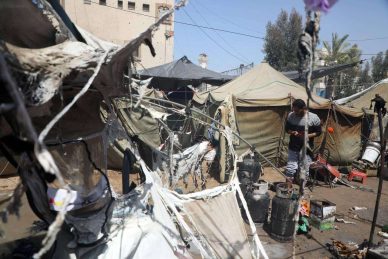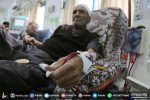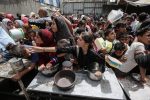GAZA, (PIC)
In Gaza, where daily life is a battle for survival, the stories of citizens who have lost their homes in the genocide war waged by the Israeli occupation army on the Strip for 10 months, serve as a mirror reflecting the suffering of an entire people, and carry with them bitter human details of what it means for someone to lose their home, with all the memories and hopes built upon sacrifices.
Ahmed’s family was living in peace until that fateful night. Ahmed, the head of the household, says, “Night had fallen, and suddenly we heard a huge explosion. Then the remaining neighbors in the area started calling for the area to be evacuated due to a threat to blow up the residential tower across from my house.”
Ahmed’s family of seven children moved to one of the shelters in the Sheikh Radwan neighborhood south of Gaza City, and as the ground invasion of the neighborhood expanded, they moved to Al-Aqsa University until the army withdrew from the city.
Ahmed tells the Palestinian Information Center (PIC), “I did not wait a minute after learning that the occupation army had withdrawn to the northern outskirts of the Gaza Strip, and I quickly carried myself and my brother to check on our three-story house. As soon as we arrived, we were shocked by the condition of the place.”
He continues, “I found a large part of the house had been hit by artillery shells and the furniture burned. I experienced agonizing moments I had never known before. This is the first time I have faced such an event and lived the feelings of thousands of citizens who have repeatedly lost their homes in previous Israeli wars.”
The man, who is over 50 years old, stresses that losing the house is not a trivial matter, “You don’t just lose stones, you feel as if someone is taking you to a remote world to erase a lifetime of memories, for the house is memories, feelings, and situations attached to every corner and angle of it.”
Israel has systematically pursued the destruction of houses in the Gaza Strip, demolishing hundreds of thousands of residential units completely, turning their owners and residents into homeless living in tents and shelters.
In some cases, the Israeli warplanes bomb houses over the heads of their residents, killing them under the rubble, and in other cases, they destroy the houses by air strikes and blow up residential blocks during their ground incursions, in addition to the widespread destruction in the so-called buffer zones, all of which occurs without any necessity or justification according to the residents and international organizations.
Ahmed points out that “the psychological and social pain is more brutal than the material loss, as I often find my tongue tied when faced with my children’s questions about the time of return, the possibility of repairing the house and returning to it, and the time it will take, and the place they will stay in until it is repaired or rebuilt.”
Ahmad wonders, “How can children feel safe in a temporary place? They have lost everything, even their small toys.”
Satellite images analyzed by the United Nations Satellite Center showed that 35% of the total buildings in the Gaza Strip were destroyed or damaged due to the Israeli genocide war on Gaza, which is equivalent to 88,868 buildings, according to the Center’s findings.
The Center used in its assessment issued in mid-March last year high-resolution images taken by satellites and collected on February 29, and compared them to images taken before and after the outbreak of the war.
Crushed dreams
Aya Ahmad cries whenever she remembers her home and the memories in it, “I had a private room or wing, all my memories, books and desk are gone.”
Aya tells the PIC, “I am a medical student in the beginning of the third year, and at the start of my university studies, my father prepared the second floor of our house, and bought me a large collection of medical books, and prepared a special room for me with a desk, on the walls of which I had planned my hopes and ambitions.”
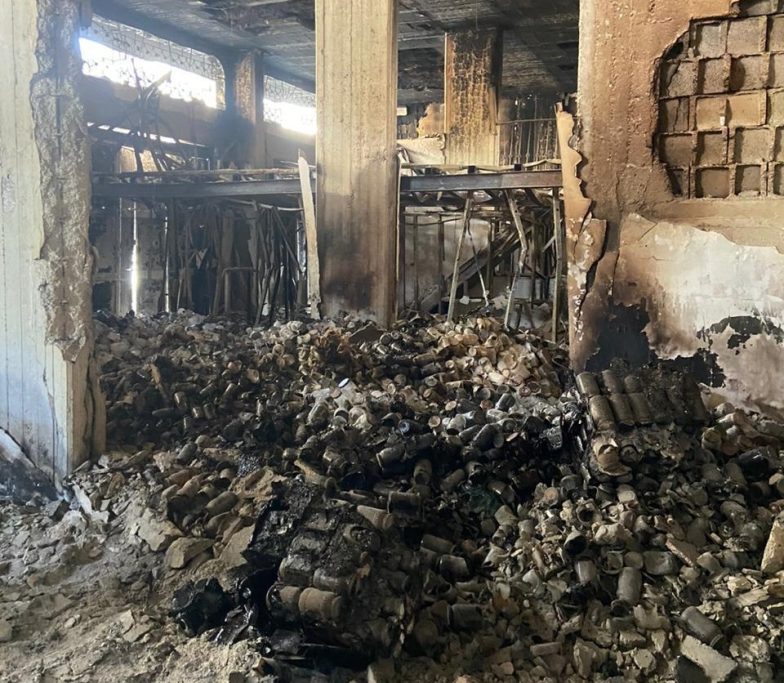
The twenty-year-old girl lives in the city of Khan Yunis, and she had never before had to be displaced in the previous Israeli wars on Gaza as in this war, “This is the first time I have been displaced, and when we had to do so at the beginning of December 2023, we cried a lot. We took a few things from the house hoping to return.”
Aya adds, “But the matter was prolonged, and 10 months have passed since the war started without stopping and without us returning to the house that was destroyed by the bombing, and we lost most of our personal documents. We moved between the tents, and we lost many of our loved ones, then came the destruction of the house to increase our pain. My books, certificates, clothes and memories, they were all crushed, and with them a lot of dreams were lost.”
Aya’s home garden was her haven after the long university day, enjoying time with her parents under the palm and lemon trees on the summer nights that they are now enduring under the tents of forced displacement.
She adds, “My wish was to return home, to the extent that I was about to return to it after the withdrawal of the occupation forces from our region. At that time, it was still standing with partial damage, but the occupation army returned after months to bombard and flatten it without any reason.”
Aya expresses her confidence in her family’s ability to rebuild what the occupation has destroyed, despite the pain she experiences whenever she flips through the pictures of the house and the social memories it carries, over which she sheds tears for its loss.
A United Nations assessment found that a fleet of more than 100 trucks will take 15 years to remove about 40 million tons of rubble in Gaza, in an operation that costs between $500 and $600 million.
According to the assessment, published by the United Nations Environment Program last month, 137,297 buildings in Gaza were damaged; more than half of the total number. Among them, a little over a quarter were destroyed, about a tenth suffered severe damage, and a third suffered moderate damage.
It’s not just stones
As for Abeer Abu Salem, a resident of the Beit Lahia town project, north of the Gaza Strip, says the smell of gunpowder still lingers, as if the event had just occurred. “I will never forget what I experienced that evening, and it cannot be erased from my memory. I cannot describe the scene, due to the horror of what I witnessed.”
Abeer recounts what happened, “I heard an explosion and saw the walls collapsing and the columns flying. I tried to flee but couldn’t, and with the air pressure, I found myself in the second room. I can’t imagine that I’m still alive. All of this happened in seconds, turning my life upside down.”
Abeer spent about a month in the Indonesian hospital, before the occupation army forced them to flee to the south of the Strip. When asked about the meaning of losing the house, she replies, “It is not easy to lose the house in which you grew up. The house is full of precious memories, and it took my father years of hard work to build it as a residential apartment above the family home.”
She points out that the fear they are experiencing is not about their ability to rebuild the house that was destroyed, but rather about the children’s feelings when they see what happened to the family home. Abeer concludes sadly, looking around, “We are now displaced, and we do not know the fate that awaits us after the end of this cursed war. We cannot think about whether we will really return to Beit Lahia or whether we will live what our ancestors lived when they were forcibly evicted from their homes 76 years ago in the Nakba of 1948, and died in the hope of returning.”


